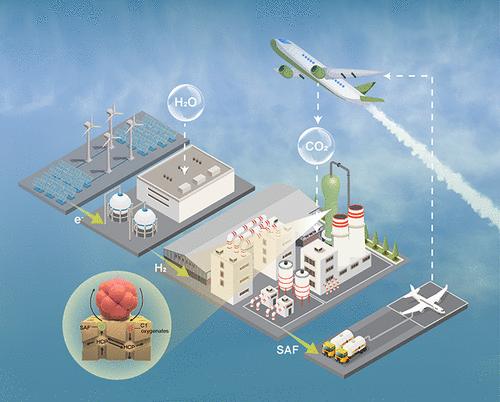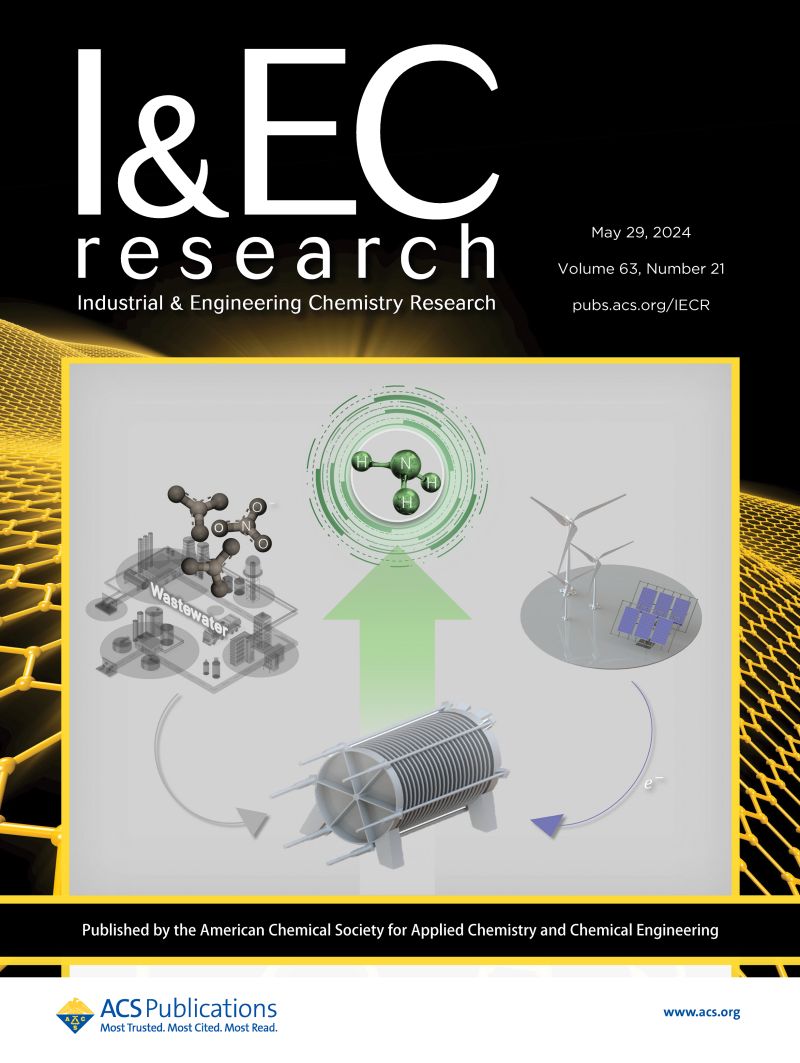Road to Carbon-Neutral Aviation: One-Step Conversion of CO2 to Sustainable Aviation Fuels
IF 3.8
3区 工程技术
Q2 ENGINEERING, CHEMICAL
引用次数: 0
Abstract
Aviation has accounted for approximately 3.5% of global CO2 emissions since the beginning of industrialization. Achieving carbon neutrality and sustainability in aviation requires replacing fossil-fuel-based kerosene with kerosene derived from renewable and sustainable energy sources. This Review focuses on recent advances and challenges in the development of sustainable aviation fuel (SAF) through the one-step conversion of CO2, known as the CO2AF process, which offers the advantages of a short route and high efficiency. We provide an overview of the bifunctional catalyst system designed to achieve both high CO2 conversion efficiency and high aromatic selectivity as well as the application of high-pressure fluidized bed reactors that enhance mass and heat transfer rates. In addition, we discuss the engineering challenges associated with the commercial application of the CO2AF process, specifically the stability and longevity of the bifunctional catalyst in high-pressure fluidized bed reactors. Multilevel engineering principles for scaling up the CO2AF process are highlighted, focusing on the interrelationships between molecular motion, catalyst system design, reactor configuration, and overall process integration. We also compare our approach with recent research efforts across the field, aiming to bridge the gap between fundamental science and industrial-scale SAF production. By providing insights into the multiscale research required for bridging these gaps, we hope to contribute to the accelerated development of SAF technologies.

求助全文
约1分钟内获得全文
求助全文
来源期刊

Industrial & Engineering Chemistry Research
工程技术-工程:化工
CiteScore
7.40
自引率
7.10%
发文量
1467
审稿时长
2.8 months
期刊介绍:
ndustrial & Engineering Chemistry, with variations in title and format, has been published since 1909 by the American Chemical Society. Industrial & Engineering Chemistry Research is a weekly publication that reports industrial and academic research in the broad fields of applied chemistry and chemical engineering with special focus on fundamentals, processes, and products.
 求助内容:
求助内容: 应助结果提醒方式:
应助结果提醒方式:


